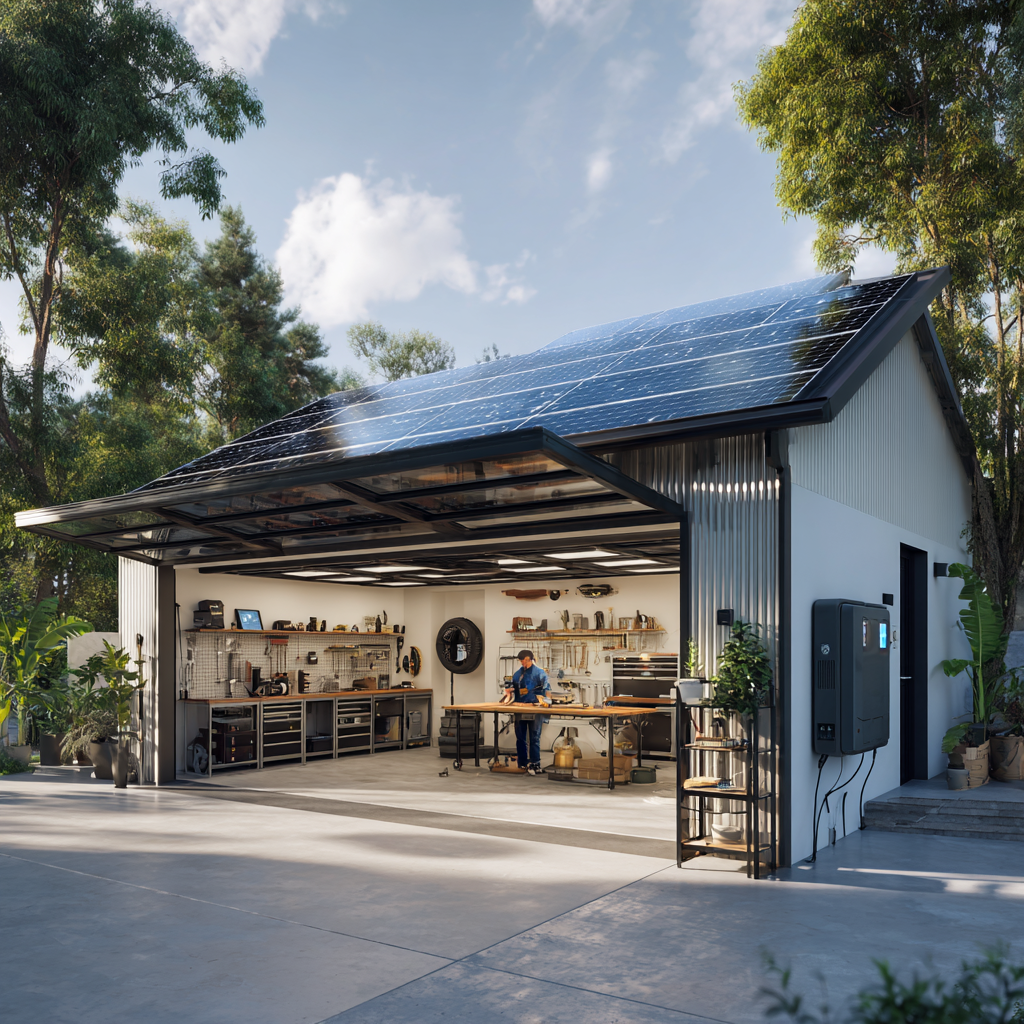Smart Plugs and Their Practical Applications - Guide 2025

Smart plugs are the simplest way to add intelligence to regular appliances. For a few dollars, you get remote control, automation, and consumption monitoring. In this guide, I'll show you how to select and practically use them.
What Are Smart Plugs and How Do They Work?
Smart plugs are outlet adapters or replacements for classic outlets that connect to WiFi and allow:
- Remote control - turn on/off from anywhere
- Time scheduling - automatic switching according to schedule
- Consumption monitoring - how much electricity appliances consume
- Voice control - via Alexa, Google, Siri
- Automation - reaction to various events
Types of Smart Plugs
1. Plug-in Outlets (Adapters)
Advantages:
- Simple installation (just plug in)
- Portable
- No electrical work required
Disadvantages:
- Protrude from wall
- Block adjacent outlet
Recommended Models:
- TP-Link Tapo P110 ($16-24) - with consumption monitoring
- Shelly Plug S ($24-32) - 16A, monitoring, small size
- IKEA TRÅDFRI ($12) - cheap, requires hub
2. Built-in Outlets
Advantages:
- Elegant solution
- Don't block space
- Professional appearance
Disadvantages:
- Electrician installation required
- Higher price
- Permanent installation
Top Models:
- Shelly 1PM ($20-28) - universal module behind switch
- Sonoff Mini R2 ($12-16) - compact
- Fibaro Single Switch ($60-80) - Z-Wave
3. Outdoor Smart Plugs
Special Features:
- IP44 rating and higher
- Weather resistance
- Higher load capacity
Uses:
- Garden lighting
- Pumps and filtration
- Holiday decorations
Recommendations:
- TP-Link Tapo P115 ($24-32) - IP64
- Meross MSS620 ($32-40) - 2 outlets
4. Smart Power Strips
When Useful:
- Multiple appliances in one location
- Individual outlet control
- USB charging
Best Choices:
- Gosund P1 ($32-48) - 3 outlets + 3 USB
- Meross MSS425F ($60-80) - 4 independent outlets
Practical Smart Plug Uses
1. Energy Savings - Phantom Loads
Problem: Standby power consumption
Typical standby consumption:
- TV: 5-10W
- Set-top box: 10-20W
- PC + monitor: 10-30W
- Microwave: 3-5W
- Coffee maker: 2-5W
Total: 30-70W × 24h = 0.7-1.7 kWh/day
Yearly: 250-620 kWh = $30-75
Solution: Smart plug turns off everything overnight
2. Presence Simulation
Setup:
"Vacation" Schedule:
- Living room lamp: 7:00-10:30 PM (random ±30min)
- TV outlet: 8:00-11:00 PM
- Bedroom: 10:00-11:30 PM
- Morning brief: 6:30-7:30 AM
3. Overheating Protection
Automation:
WHEN temperature > 158°F
OR power > 2000W for 30 min
THEN turn off outlet + send notification
4. Charging Station
Smart Charger:
- Charge only at night (cheap rate)
- Turn off after charging (battery protection)
- Monitor consumption
5. Automatic Irrigation
Irrigation Pump:
- Turn on daily at 6:00 AM and 7:00 PM
- Run for 15 minutes
- If raining (internet data), skip
6. Aquarium/Terrarium
Daily Cycle:
Lighting:
- 8:00 AM - gradual sunrise
- 8:00 PM - gradual sunset
Filtration: continuously
Heating: based on temperature sensor
Consumption Monitoring - Practical Examples
How to Read Consumption Data
Basic Information:
- Current power (W) - how much appliance draws now
- Voltage (V) - grid quality (120V ±10%)
- Current (A) - outlet load
- Consumption (kWh) - total for period
Measurement Examples
Refrigerator:
Average power: 100W
Runs: 40% of time
Daily consumption: 0.96 kWh
Annual cost: $42
Washing Machine (1 cycle):
Water heating: 2000W (10 min)
Washing: 200W (30 min)
Spinning: 500W (10 min)
Total: 0.5 kWh = $0.06/wash
PC Setup:
Idle: 80W
Work: 150W
Gaming: 350W
8h daily: 1.2 kWh = $0.14
Installation and Setup
WiFi Plug - Step by Step
Preparation
- Download manufacturer app
- Prepare WiFi password (2.4GHz)
Physical Installation
- Plug into outlet
- Press pairing button (LED blinks)
App Pairing
1. Open app 2. Click "Add Device" 3. Select plug type 4. Enter WiFi password 5. Wait for connectionConfiguration
- Name the plug (e.g., "Living Room TV")
- Assign to room
- Set icon
Built-in Module - Installation
⚠️ WARNING: Turn off breaker! Working with 120V!
Shelly 1PM Wiring:
- L (hot) → L input
- N (neutral) → N input
- SW → switch (optional)
- O → output to appliance
Automation and Scenarios
Basic Timers
Morning Coffee:
Turn on coffee maker:
- Monday-Friday: 6:45 AM
- Weekend: 8:00 AM
Turn off after: 2 hours
Holiday Lighting:
Period: Dec 1 - Jan 6
Turn on: 30 min after sunset
Turn off: 11:00 PM
Advanced Automations
Office Energy Saver:
trigger:
- platform: time
at: "18:00"
- platform: state
entity_id: person.user
to: "not_home"
for: "00:10:00"
action:
- service: switch.turn_off
entity_id:
- switch.pc_outlet
- switch.monitor_outlet
- switch.printerFlood Protection:
trigger:
- platform: state
entity_id: sensor.flood_sensor
to: "wet"
action:
- service: switch.turn_off
entity_id: switch.washing_machine
- service: notify.mobile_app
data:
message: "WARNING! Water detected near washing machine!"Integration with Other Devices
With Motion Sensor:
Hallway Light:
WHEN motion detected
AND it's dark (after sunset)
THEN turn on light for 5 minutes
With Temperature Sensor:
Fan:
WHEN temperature > 79°F
THEN turn on fan
WHEN temperature < 75°F
THEN turn off fan
Security and Limits
Maximum Load
⚠️ Important Limits:
- Most smart plugs: 15A (1800W)
- Premium models: 20A (2400W)
DO NOT USE for:
- Electric kettles (often 1500W+)
- Space heaters (1200-1500W)
- Some microwaves (over 1200W)
Safety Tips
- Check appliance power rating
- Don't daisy chain smart plugs
- Ventilation - plugs generate heat
- Update firmware
- Strong passwords for accounts
Privacy Protection
- Use local control (Shelly, Tasmota)
- Separate IoT devices on guest WiFi
- Disable cloud features you don't need
- Regular password changes
Popular Model Comparison
Budget Category (under $20)
| Model | Price | Monitoring | Max Load | Note |
|---|---|---|---|---|
| TP-Link Tapo P100 | $12 | No | 15A | Basic functions |
| Gosund EP2 | $14 | Yes | 15A | Requires Tuya app |
| IKEA TRÅDFRI | $12 | No | 15A | Needs hub |
Mid-range ($20-40)
| Model | Price | Monitoring | Max Load | Note |
|---|---|---|---|---|
| Shelly Plug S | $28 | Yes | 16A | Local API |
| TP-Link Tapo P110 | $22 | Yes | 16A | Detailed statistics |
| Meross MSS310 | $24 | Yes | 16A | HomeKit |
Premium ($40+)
| Model | Price | Monitoring | Max Load | Note |
|---|---|---|---|---|
| Eve Energy | $60 | Yes | 15A | Thread, HomeKit |
| Fibaro Wall Plug | $72 | Yes | 15A | Z-Wave, LED ring |
| Shelly Pro 1PM | $48 | Yes | 16A | DIN rail, LAN |
Troubleshooting
Plug Won't Disconnect
- Restart plug (unplug for 10s)
- Check WiFi (2.4GHz, not 5GHz)
- Reset (hold button 10s)
- Move closer to router
Frequent Disconnections
- Weak WiFi signal
- Overloaded router (too many devices)
- Outdated firmware
- Interference with other devices
Inaccurate Monitoring
- Calibrate in app
- Some plugs don't measure small loads (<5W)
- Inductive loads may cause inaccuracies
Inspiration Projects
1. Smart Garage
Components:
- Smart plug for door opener
- Magnetic contact (open/closed)
- Camera
- Temperature sensor
Functions:
- Open via mobile
- Auto-close after 10 min
- Notification when opened
- Heating during frost
2. Automatic Irrigation
Hardware:
- Outdoor smart plug
- Pump or solenoid valve
- Soil moisture sensor
Logic:
- Water morning/evening
- Only when dry
- Skip when raining
3. Pet Feeder
Assembly:
- Smart plug
- Automatic feeder
- Camera
Program:
- Feed 2x daily
- Record eating times
- Remote feeding
Conclusion
Smart plugs are the gateway to the smart home world. For minimal investment, you get appliance control, energy savings, and new automation possibilities. Start with one or two and gradually expand according to needs.
My beginner recommendation: TP-Link Tapo P110 - reliable, with consumption monitoring, good price.

